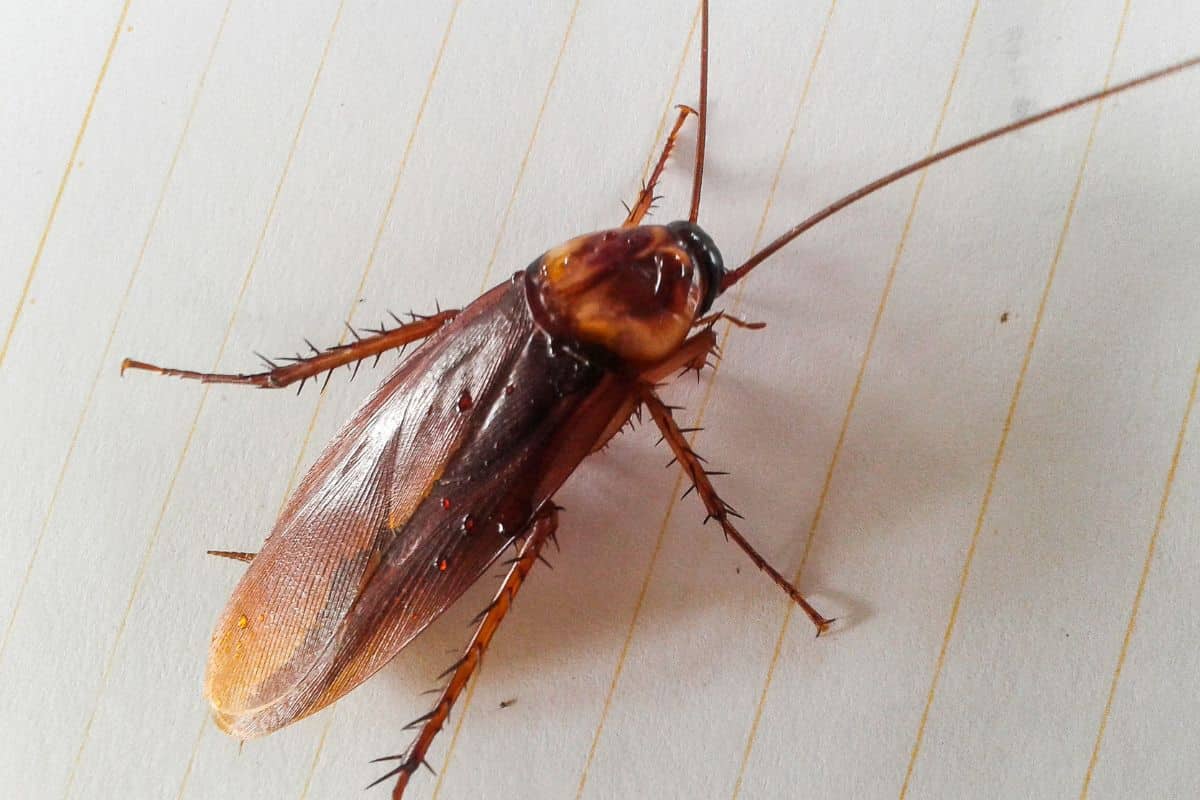Ever jumped at the sight of a dark, scurrying insect in your home? Many bugs share similar characteristics with cockroaches, creating unnecessary panic. Learning to distinguish these cockroach-like insects helps you respond appropriately to potential infestations. While some insects merely resemble roaches, others might indicate different household issues requiring specific attention.
Common insects often mistaken for cockroaches
Several household insects bear a striking resemblance to cockroaches, often causing alarm among homeowners. Water bugs, also called giant water bugs or electric light bugs, are frequently confused with cockroaches due to their similar size and coloration. These aquatic insects typically have larger bodies and stronger pincers than common cockroaches.
Crickets represent another cockroach lookalike that many people misidentify. While they share the elongated body shape, crickets possess distinctive long antennae and powerful hind legs for jumping. Their characteristic chirping sound also helps distinguish them from silent-moving roaches.
Ground beetles constitute a diverse family of insects that sometimes trigger cockroach concerns. These beetles typically display harder, more rounded shells and move with less speed than cockroaches. Many beetle species actually benefit gardens by feeding on other pests that might damage plants, similar to how opossums eat various insects and pests in outdoor environments.
June bugs and certain types of wood-boring beetles may also resemble cockroaches at first glance. These seasonal insects have more rounded bodies and fly more readily than most roach species. They typically appear during specific seasons, unlike cockroaches which remain active year-round in suitable conditions.
The following insects are commonly mistaken for cockroaches:
- Water bugs (giant water bugs)
- Crickets and Jerusalem crickets
- Ground beetles
- June bugs
- Certain wood-boring beetles
- Palmetto bugs (which are actually a type of cockroach)
Key differences between cockroaches and similar insects
Understanding specific anatomical differences helps in accurate identification of roach-like bugs. Cockroaches possess distinctive flat, oval-shaped bodies with long antennae and six legs. Their heads appear somewhat hidden under a shield-like structure called the pronotum. Most species display rapid, scurrying movements when exposed to light.
Water bugs, despite superficial similarities, have more robust front legs modified for catching prey and typically larger bodies than common household roaches. They also prefer aquatic environments, unlike cockroaches that thrive in dry, dark spaces. Finding one near water sources doesn’t necessarily indicate a cockroach problem.
Crickets stand out with their powerful hind legs designed for jumping and distinctive chirping sounds produced by males. Their bodies also tend to be more cylindrical rather than flattened. If you’re dealing with small flying insects instead, you might need strategies for keeping fruit flies off bananas and other produce.
Beetles generally have harder, more convex bodies with visible segmentation between their thorax and abdomen. Most beetles possess hardened forewings called elytra that protect their membranous flying wings. Their antennae are usually shorter and may have distinctive clubs or segments, unlike the uniform filamentous antennae of cockroaches.
Movement patterns provide additional identification clues. Cockroaches exhibit characteristic rapid, erratic scurrying when exposed to light. Beetles typically move more deliberately, while crickets alternate between walking and jumping. These behavioral differences can help determine whether you’re dealing with a cockroach or a similar-looking insect.
Identifying true cockroach infestations
Confirming an actual cockroach problem requires looking beyond individual sightings to recognize specific infestation signs. True cockroach infestations typically leave behind distinctive evidence including small, cylindrical droppings resembling coffee grounds or black pepper. These droppings accumulate in dark corners, behind appliances, and inside cabinets.
A musty, oily odor often accompanies significant cockroach populations. This distinctive smell results from chemicals roaches release and becomes more noticeable as infestation levels increase. If you detect this unpleasant aroma in kitchen areas or bathrooms, you likely have cockroaches rather than lookalike insects.
Egg cases, called oothecae, provide conclusive evidence of cockroach presence. These small, purse-shaped capsules may be attached to surfaces or deposited in hidden locations. Different cockroach species produce distinctively shaped cases, but all indicate active breeding populations. Finding these cases confirms you’re dealing with actual cockroaches rather than similar insects.
Shed skins represent another telltale sign of cockroach presence. As roaches grow, they periodically molt, leaving behind translucent exoskeletons that retain their distinctive shape. These molted skins often collect in areas where cockroaches congregate. Similarly, addressing household issues early helps prevent larger problems, just as knowing how to remove brown stains from toilets prevents more permanent damage.
Look for these evidence markers in chronological order of typical infestation progression:
- Live roach sightings (usually nocturnal)
- Droppings in dark corners and along baseboards
- Distinctive musty odor in enclosed spaces
- Shed skins in hidden locations
- Egg cases attached to surfaces
- Damage to food packaging and paper goods
Prevention and management strategies
Whether dealing with actual cockroaches or similar insects, implementing preventive measures helps maintain a pest-free home. Start by eliminating food sources through proper sanitation. Wipe counters regularly, store food in sealed containers, and clean up spills promptly. Even small amounts of organic matter can attract and sustain cockroach populations.
Reduce moisture sources that attract both cockroaches and cockroach-like insects. Repair leaking pipes, address condensation issues, and ensure proper bathroom ventilation. Many insects that resemble cockroaches, such as water bugs, require moisture to survive. If you notice plant problems alongside pest issues, investigate whether issues like black spots on camellia leaves might indicate related environmental factors.
Seal entry points to prevent insects from entering your home. Caulk cracks around windows, doors, and foundations. Install door sweeps and repair damaged window screens. These physical barriers effectively block access for many crawling insects, regardless of species.
Consider natural deterrents like diatomaceous earth, which damages the exoskeletons of many insects, including cockroaches and their lookalikes. Boric acid provides another effective option when applied to areas where insects travel, though it requires careful placement away from children and pets.
For persistent problems with cockroaches or similar insects, consult professional pest management services. Experts can accurately identify specific species and recommend targeted treatment strategies that address your particular situation effectively and safely.

